
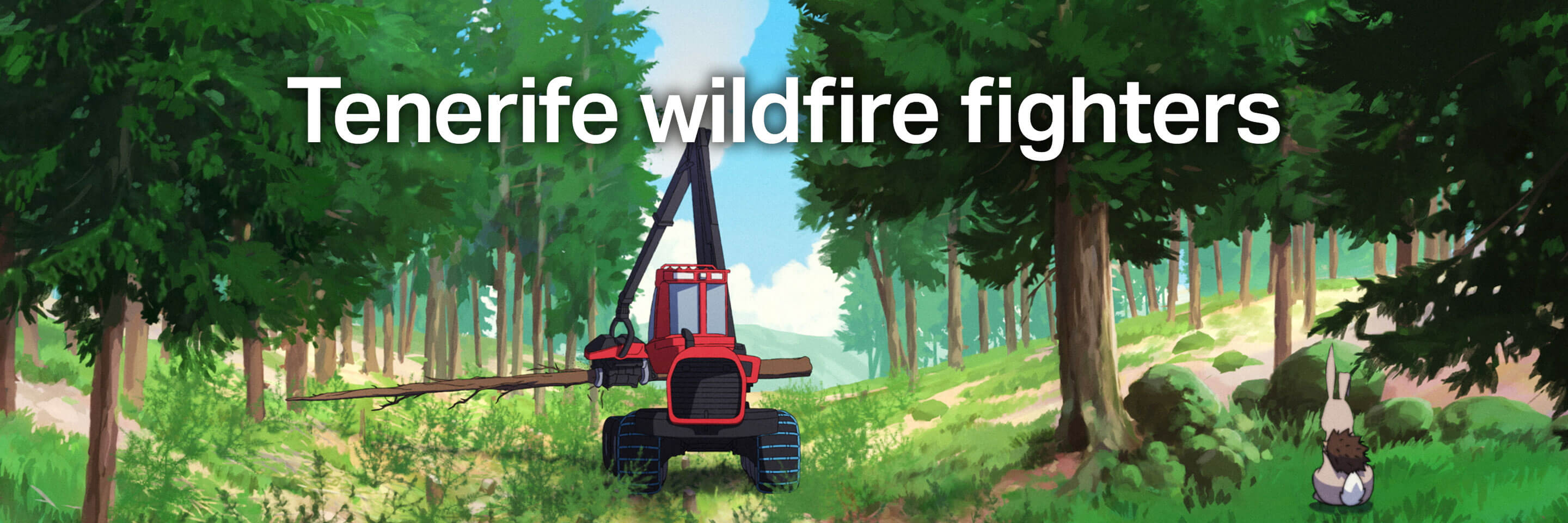
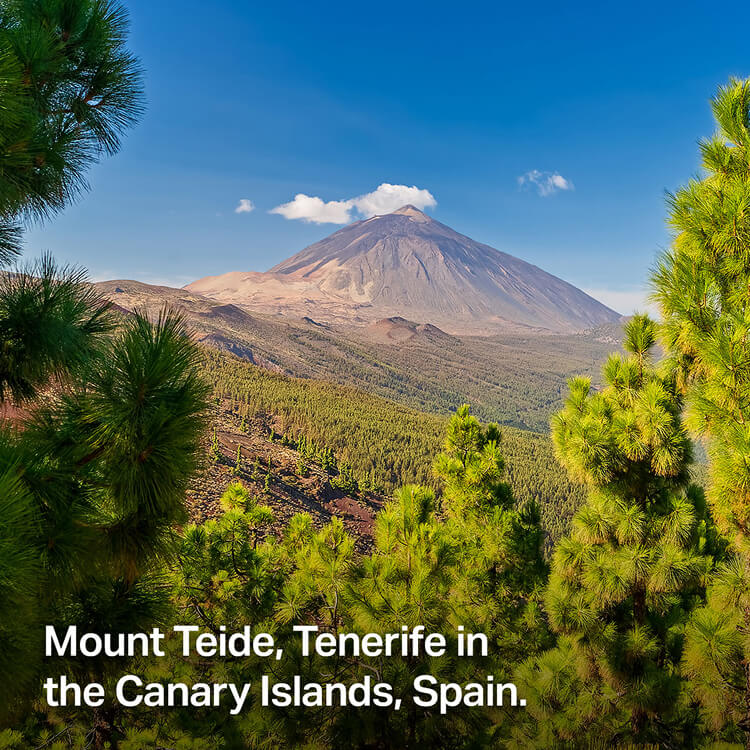



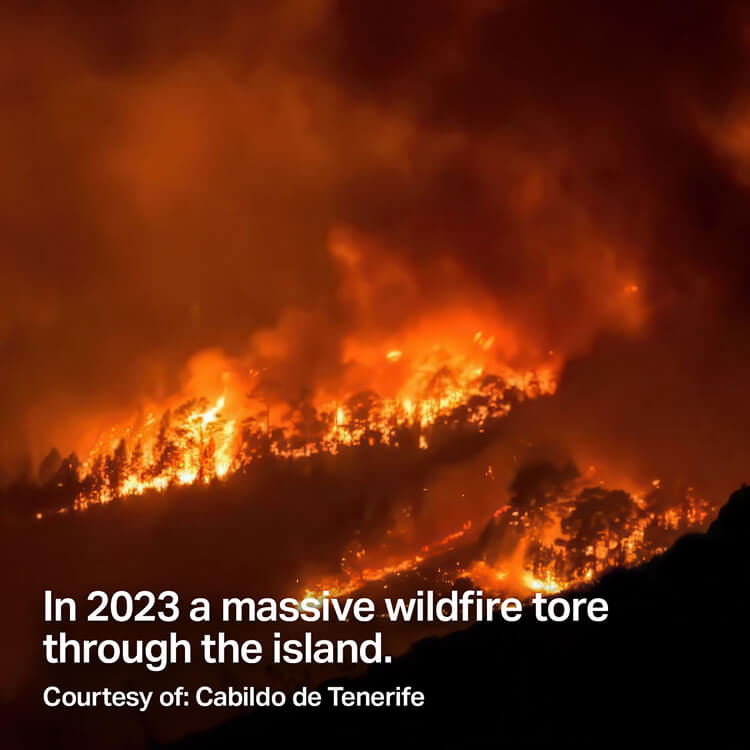
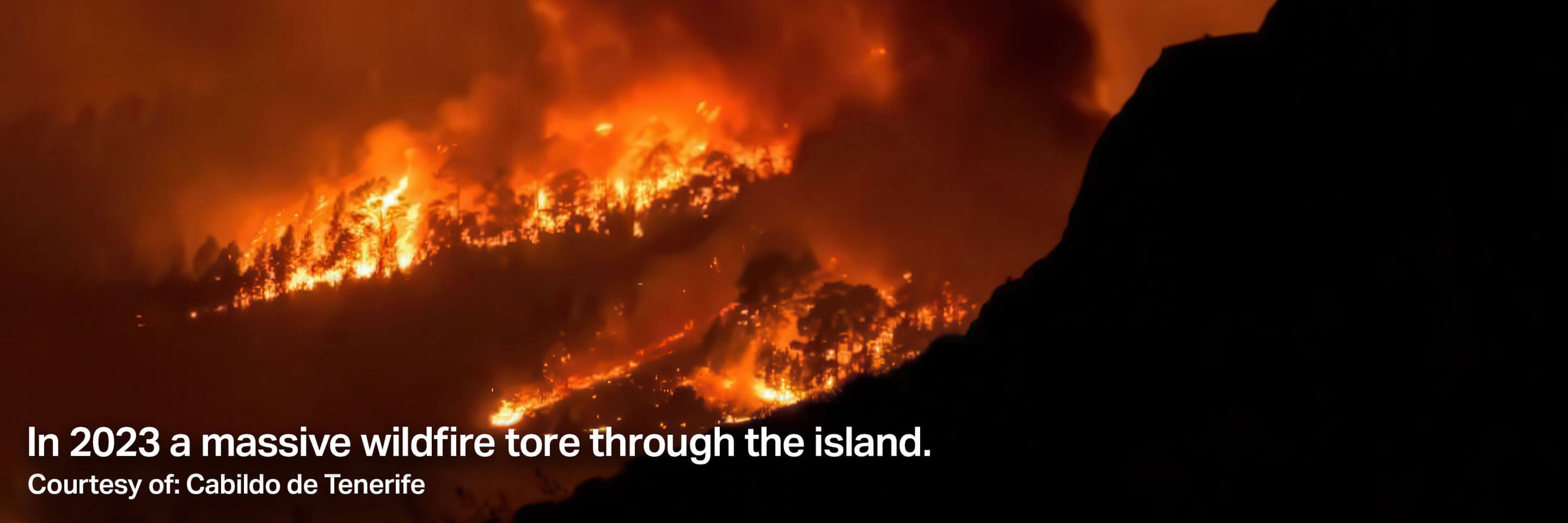
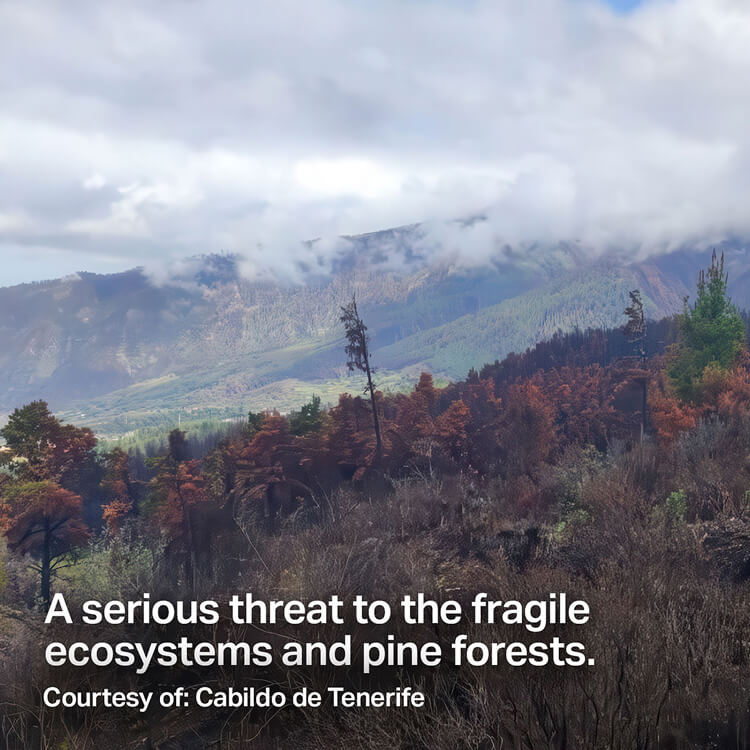
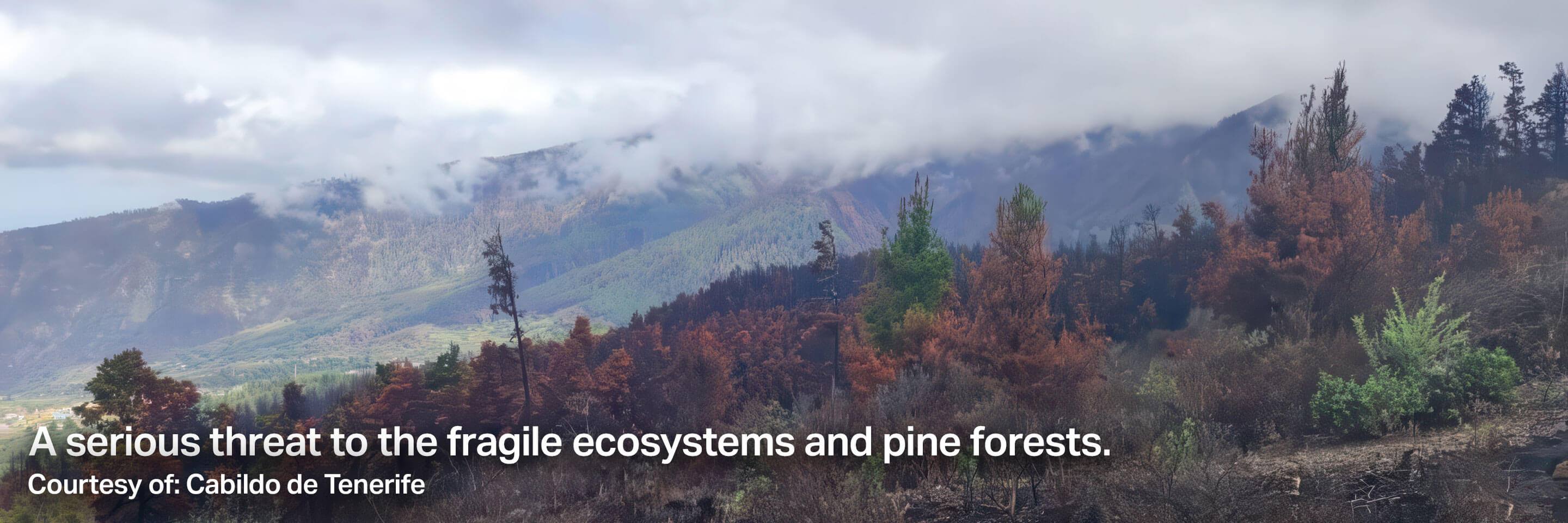
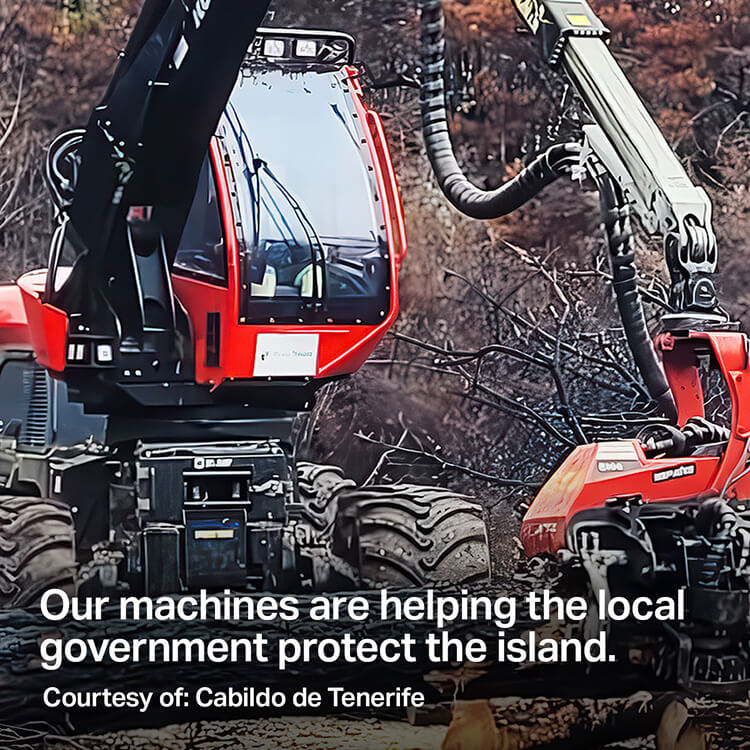
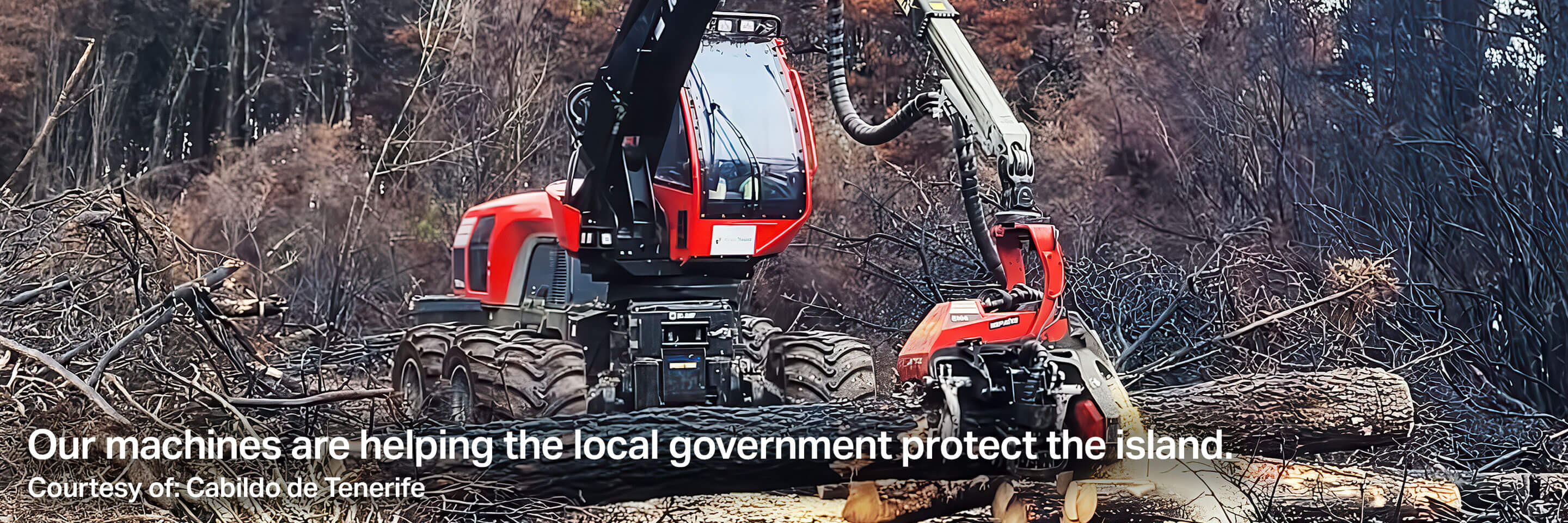
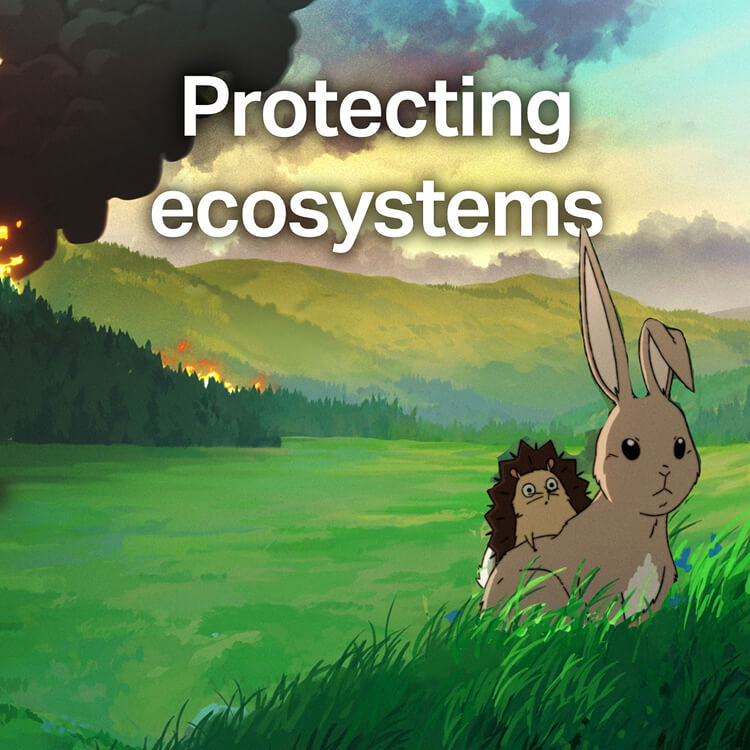
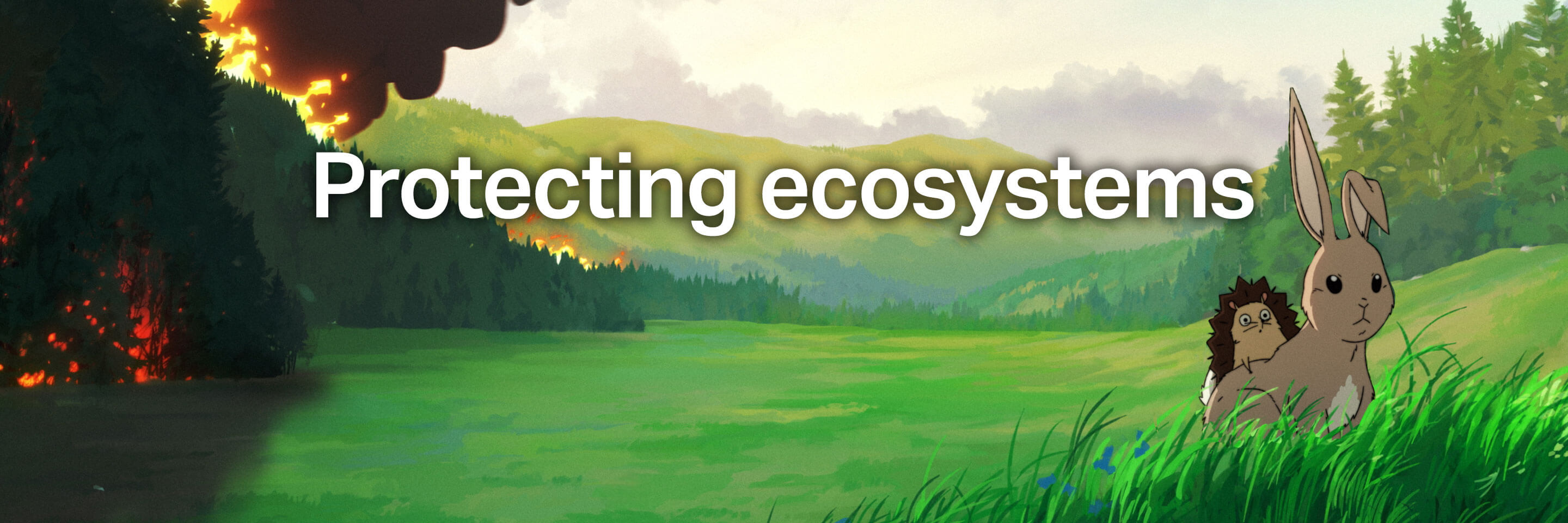
Tenerife, the largest of Spain’s Canary Islands, is a mixture of hot climate and pine forests which creates a paradise highly susceptible to wildfires. Since 2022, Komatsu’s forestry machines have played a key role in helping the local government protect the island’s national parks from these fires. Thanks to the ongoing development of our smart technology, park rangers can plan the work directly from the office. Trees are marked in the field using a tablet, with precision down to the centimeter. Machine operators are able to minimize ground damage by getting the best driving routes to support forest conservation, even receiving operational updates in real time from the office.
Read more in detail about the project and how our Smart Forestry technology can help limit environmental impact while supporting vital conservation efforts.
Learn more about the work to protect wildlife and natural environments through our short anime feature: ‘Stories of gentle giants: Tenerife fire fighters’ below.
Caroline Sigge works as a project manager in one of Komatsu’s many global research and development departments.
Supporting the design of forestry equipment, she manages product development teams, bringing together engineers, hydraulic experts, control system developers and mechanical designers.
Working on forestry machines at Komatsu means engineering for all kinds of environments. The machines must operate reliably in everything from Arctic cold to Australian heat, which requires thorough long-term durability testing under real-world conditions.
Engineers also need to think about regional differences, like camera placement for left- vs. right-hand traffic, or whether replacement parts like hydraulic hoses are available locally. The team collaborates with global compliance experts to ensure that every component is designed to work safely and efficiently across all target markets—from wiring and hydraulics to temperature tolerance and visibility standards.
If a new machine is being developed engineers get to see it go from a 3D model to something real. Every week, designers and engineers visit the prototype workshop to look at what’s been built, talk to the people assembling it, and see how their ideas are shaping up in real metal and hydraulics.
At the R&D department, everyone is given real trust and responsibility from early on, with the freedom to try out creative ideas and find their own solutions. The culture encourages open communication between departments, and if one team is under pressure, others don’t hesitate to jump in. There’s always support from experienced colleagues who are happy to help.
Magnus Wallin is a software developer at Komatsu. Among other things he works on Komatsu’s Smart Forestry Vision software, a GIS-based system that provides real-time information and tools to make forestry work more efficient, precise and sustainable for everyone involved.
One of the projects Magnus is most proud of involved software design that boosted the GPS accuracy of the machines — from a few decimeters down to just a few centimeters. This precision helps operators harvest more efficiently and reduces damage to terrain by choosing the best routes to drive.
The team also developed tools to support environmental regulations. Operators can now track how many high stumps they’ve left in an area — a biodiversity measure used in many countries — and receive alerts if they get close to protected zones like cultural landmarks or conservation areas.
For someone who grew up hiking and caring about the outdoors, the job at Komatsu ticks all the boxes for Magnus. He gets to work with a renewable resource like wood and big machines, while also helping limit their environmental impact.
To make sure every feature they develop works like it should, the team tests their software directly in the field with experienced operators and prototype drivers. These hands-on trials provide real-world insights that help catch any issues early, refine usability and ensure the tools truly support the people using them.
It’s not just the mission that makes Komatsu special — it’s the people and the company culture. The team works closely, listens to each other and shares knowledge freely. They collaborate across functions and have each other’s backs when things get busy. And beyond the office, they’ve become friends — hanging out, making music and sharing more than just a workspace.






